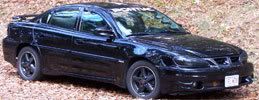Hey everyone, I'm looking to get the most HP possible out of a 3.4L N/A.
I'm starting from the ground up with this and open to any and all suggestions.
Price at the moment is not the biggest factor for me, as I will be building this over a year or so. (I don't just jump into things without thinking them through!)
I have a block that is ready to go. I'm looking at an over bore and using higher comp. pistons.
What do you all recommend for a high HP N/A engine? Specific comp. ratio for the pistons? I'm trying to get as much info here to make the best decision on what to buy.
Thanks a bunch and I hope to come out of this endeavor with a damn fine N/A engine. Who needs turbo lag anyway?
I'm starting from the ground up with this and open to any and all suggestions.
Price at the moment is not the biggest factor for me, as I will be building this over a year or so. (I don't just jump into things without thinking them through!)
I have a block that is ready to go. I'm looking at an over bore and using higher comp. pistons.
What do you all recommend for a high HP N/A engine? Specific comp. ratio for the pistons? I'm trying to get as much info here to make the best decision on what to buy.
Thanks a bunch and I hope to come out of this endeavor with a damn fine N/A engine. Who needs turbo lag anyway?




Comment